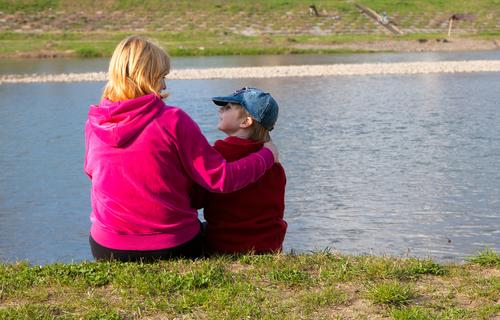- Home
- Play & Learn Home
- Online Enrichment
- Experience Modern Israel
- Israel It's Complicated
- Jewish and Me
- Jewish Holidays Jewish Values
- Jewish Values in Genesis and Jewish Values in Exodus
- Min Ha’aretz
- Our Place in the Universe
- Simply Seder
- The Prophets: Speaking Out for Justice
- Making T'filah Meaningful
- Make, Create, Celebrate
- Yom Haatzmaut Resources
- Hebrew Apps
- About The OLC
- What is the OLC?
- Introduction
- Get Started
- Resources
- OLC Content
- Parent Materials
- See My OLC Classes
- Store
Tashlich Leader’s Guide
“And cast all their sins into the depths of the sea.”
Micah 7:19
This Tashlich experience may be done at home or in school, either by a river, a lake, a well, or even with tubs of water in a classroom. While the “ceremony” is written for small groups of students, it is also appropriate for individuals in class or in a family setting.
Note: The Tashlich ceremony may be performed from the first day of Rosh Hashanah up until Hoshana Rabbah, but not on Shabbat. The following Tashlich experience is not designed to be performed on any of the actual holiday days.
Supplies:
- Tubs filled with water (if not able to stand by a river or lake)
- Small squares of white paper
- Non-toxic, washable markers
- Photos, available to print in the blue box to the right
- Tashlich verses, one set for each group, available to print in the blue box to the right
- Recorded sound of water flowing, available in the blue box to the right
Setting:
One of the crucial elements of any Tashlich ceremony is water. This ceremony is ideally performed at a natural body of water, like a river or stream. If that’s not possible, gather students around tubs of water in the classroom or near the sink in the school kitchen. Have students sit together in small groups.
The Ceremony:
1. Introduction: Pictures and Explanation
In advance of the Tashlich experience, print the pictures of happy and sad people from the blue box to the right.
To begin the Tashlich experience, show students the photos first of the people feeling proud, happy, etc., and then of the people feeling sadness, embarrassment, or fear.
When showing the happy pictures, explain that, at Rosh Hashanah, we look back at all the good things in the past year and sometimes we feel great. We are ready to eat apples and honey and greet our friends with the traditional Rosh Hashanah greeting wishing them “Shanah Tovah U’metukah, a sweet and happy new year.”
When showing the regretful pictures, explain that if we really think hard, we’ll also look back at the year and remember that there were some things we did that make us feel bad, embarrassed, or sad.
Rosh Hashanah, a new year, is an opportunity for Jews to start over. One Rosh Hashanah tradition, called Tashlich, is a time for us to show that we want to get rid of the bad things we have done in the past. Tashlich means “sending away.” It’s a time that we symbolically throw away the bad things we’ve done by tossing them into a river or some other water.
2. Regretting Our Sins
Pass out small squares of paper and give the students time to think about an incident from the previous year that they feel sorry, embarrassed, or sad about.
Have students privately write about these incidents on their small squares of paper with washable markers. Once they have finished, students hold their papers tightly in their hands so no one else can see them.
3. Tashlich Verses
Download a printable version of the complete Tashlich texts in Hebrew and English from the blue box to the right. In small groups, have students read these verses, which comprise the complete Tashlich prayers. As they read, ask students to pay attention to and circle the mention of water in each selection.
When students have finished their readings, discuss:
- What attributes of God do we learn about in these verses?
- What does it mean to call to God from “depths of the sea” or from “deep waters”?
- Why do you think we perform the Tashlich ceremony near water? What does the water remind us about?
4. Washing away our wrongdoing and starting over
If you’re not standing near a lake or river, play the recording of rushing water, which you’ll find in the blue box to the right.
Have students take their private squares of paper on which they wrote and soak the papers in the lake, river, or their group’s tub of water until the words are unrecognizable. The paper can even be dried out and used for some other Rosh Hashanah activity, like making wishes for the coming year.
As they do this, ask the students to watch carefully and think quietly about the action they have just taken.
5. Song
The group concludes this activity with a hopeful song, such as ReJewVenated, which reflects the feeling that one may have after performing Tashlich. Click here for the song and lyrics.
FOLLOW-UP AND ENRICHEMNT
Have students read the Tashlich poem (download from the blue box to the right) in class or as a homework assignment. Then, ask students to answer the questions that follow the poem, discuss the questions with their families, or write an additional few lines from their own perspective.
0


